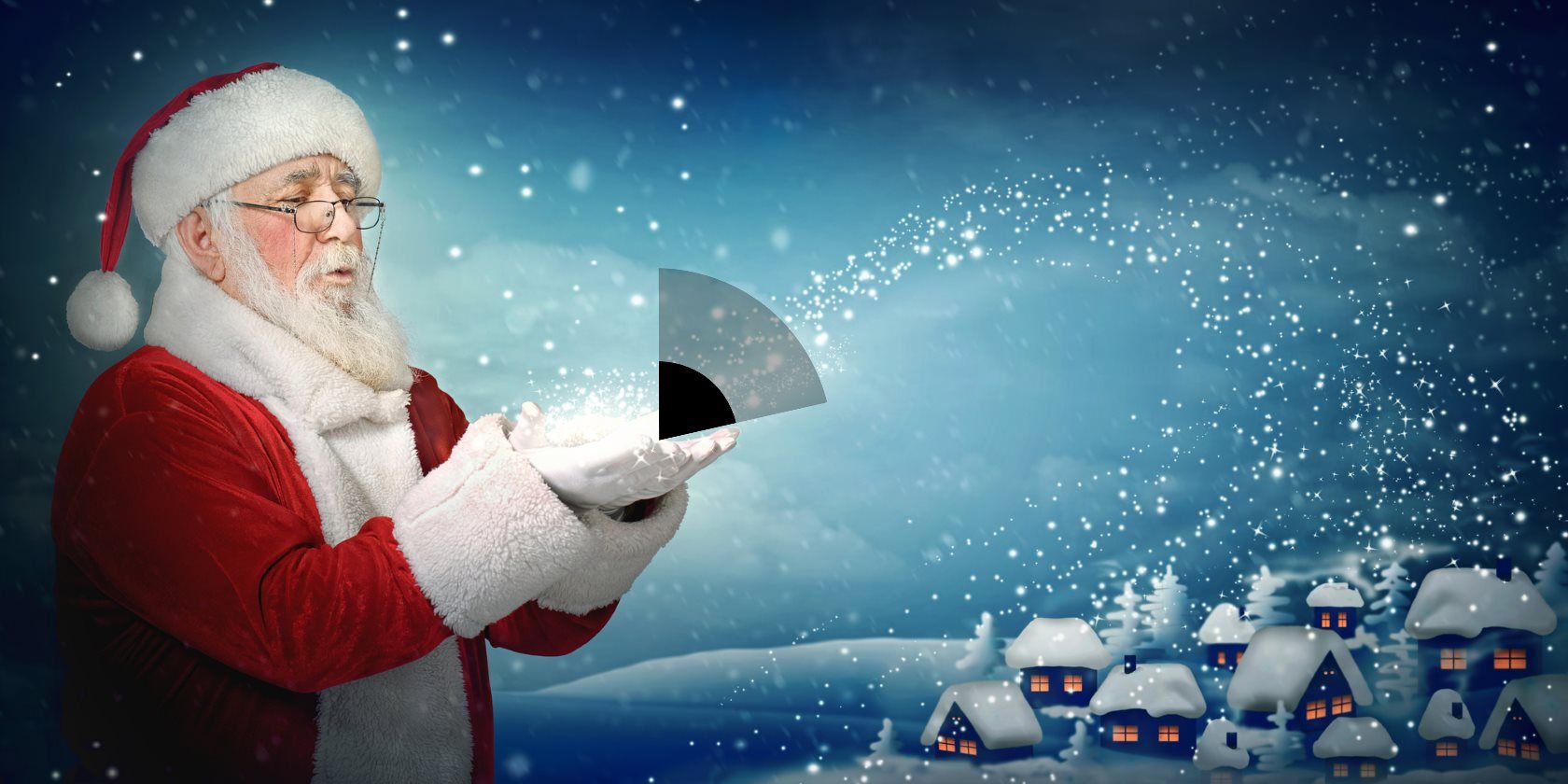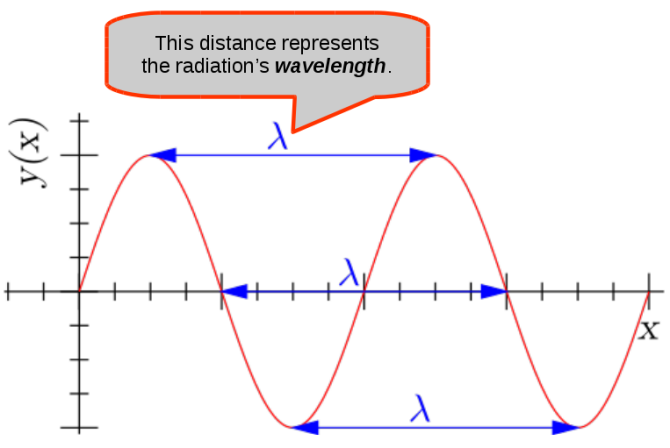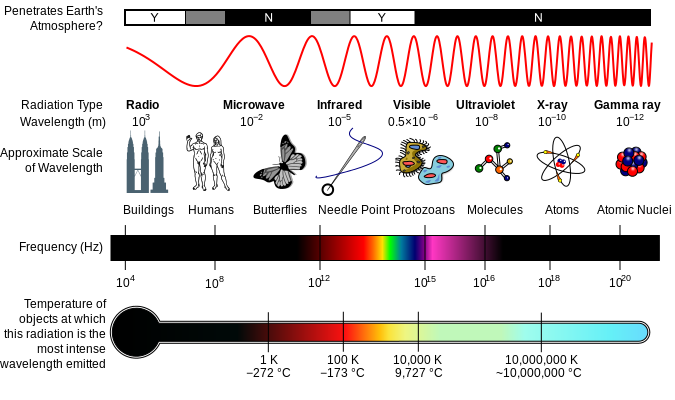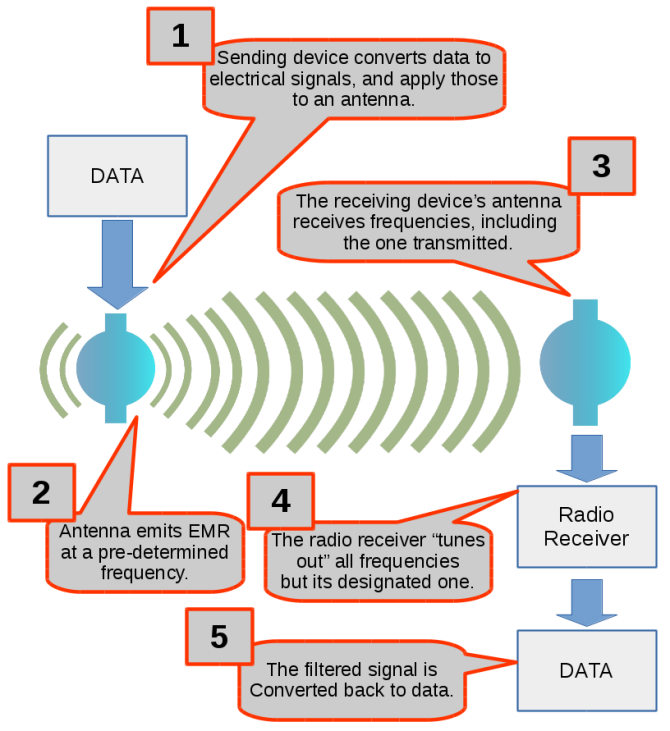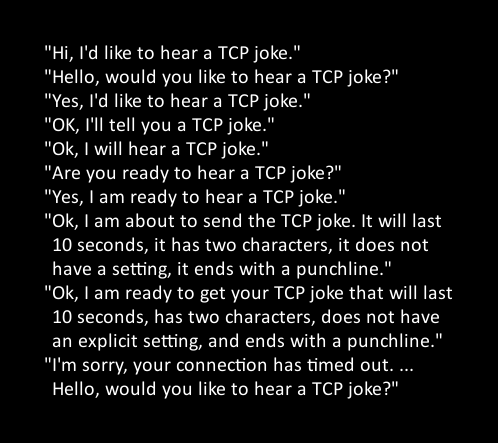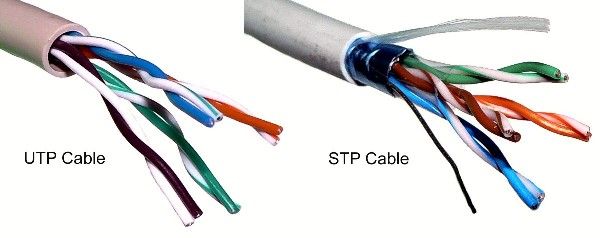In 2015, the U.K. Office of Communications (Ofcom) released its Mobile Research app. The purpose of the app is to measure the performance of mobile networks (including both cellular and WLAN), and report data and user feedback to Ofcom. Additionally the app would present some of its findings for users, including troubleshooting tips. One of these results stated that Christmas lights were a possible source of Wi-Fi interference.
Detractors called this an "attack on Christmas" and said it was false. While there's science behind this, it's not safe to say that your Xmas decorations will always cause Wi-Fi problems... but they certainly can. Let's take a look at how to avoid it.
What Is Electromagnetic Radiation?
In order to understand this issue, you need to know about electromagnetic radiation (EMR). It's a collection of different forms of energy that travel in waves, which means they rise and fall as they move through space.
EMR takes a variety of forms defined by wavelengths. The wavelength is how much time passes between the same point (i.e. one "cycle") on the wave, such as it's highest point. This is shown in the above image. The frequency the wave reaches that point within one second will give its value in Hertz (Hz). If a given wave achieves its highest point 2.4 million times within a one-second span, it has a rating of 2.4 megahertz (MHz). Since all electromagnetic radiation moves at a constant speed (the speed of light), this means wavelength and frequency are inversely related: the shorter the wavelength, the greater the frequency, and vice versa.
The above diagram illustrates the relationship betwen frequency and wavelength, and demonstrates the size of some of these waves. For example, radio waves (e.g. the ones used for terrestrial FM radio) might be as much as 10 feet between peaks. High-powered rays are smaller than an atom's width (like X-rays, which is how they have the ability to go through you and mark an image on film). Wi-Fi uses frequencies in the "microwave" spectrum, which can range in length from 0.1 meters to a millimeter. But you're more likely to see it as the 2.4GHz and 5GHz designations on the various Wi-Fi (802.11) standards.
But why is frequency/wavelength important?
Devices Are Tuned to Use Particular Wavelengths
Devices that transmit or receive EMR target particular frequencies. When speaking of wireless communication devices, their radios take digital signals (in the form of an electric current) and apply them to an omnidirectional antenna. This generates radio waves of a particular frequency in all directions.
At the other end, another antenna captures that signal (actually, antennas hear all signals that reach them). A radio receiver is the device that filters out all the unwanted frequencies and processes just the desired one, translating it back into electrical signals.
Therefore, the Wi-Fi radio that's part of your mobile device includes an antenna or antennae used for both sending and receiving, and a radio receiver for each supported frequency. We show this process, from transmission to receipt, in the above image.
Wi-Fi Interference and Its Common Sources
Now that we understand how a device receives data over Wi-Fi, you need to understand what Wi-Fi interference actually is.
We've explored this before as one of several things that might be slowing your home network down, but in a nutshell, "interference" happens when something else sends unintelligible signals on the same frequency. Devices using other frequencies do not cause interference, because the radio receiver will filter those out. But the receiver will waste its time trying to interpret waves coming in from other sources. Those waves may distort the ones actually intended for your device.
In either case, the TCP protocol (on which many network services run) operates on a principle where the sender states what thing they're sending, sends it, and waits for the receiver to confirm receipt.
The best illustration of the concept is a bit of programmer humor, shown in the above image. At the other end of the transmission, the receiver re-assembles the packets back into the original thing. If it doesn't receive that confirmation, it will try to send it again. It's this try-wait-try-again cycle that we (as humans) experience as "network slowness."
To summarize to this point, your internet devices contain radios, and those radios send and receive signals in the 2.4GHz and/or 5GHz frequency bands. The more things there are nearby that use those same frequencies, the more likely you are to get interference, and the worse it's likely to be.
So where do twinkly lights figure into all this?
Christmas Lights and Unshielded Power
We've spoken until now about devices designed to emit electromagnetic radiation of a particular frequency. But many devices also emit these waves as a byproduct of doing whatever it is that they normally do. Now, devices can't just blast radiation around willy-nilly. However, the 2.4GHz and 5GHz bands are unlicensed, meaning manufacturers need only adhere to FCC regulations that state they can only emit an acceptable level of radiation.
Electrical cords will emit radiation in the 2.4GHz range when they're carrying current. There are shielded cords (like the one above at right), meaning they have a layer of insulation inside that doesn't allow the radiation to escape. But this adds cost, so the cords on most (cheaper) holiday lights are unshielded, like the one above at right.
The result?
- When you turn on those lights, power flows through the cord.
- A byproduct of that power flow is 2.4GHz radiation emitting along the cord's length.
- If the cord is near your wireless access point, the access point will waste effort trying to interpret those signals as network traffic. Likewise if it is near your device.
- If the cord in in between the device and the access point, it may be even worse. Both will waste time listening to the cord's signal. Plus, that signal may actually distort the waves that would reach one or the other.
Wi-Fi Interference Is All About Perception
Before putting a damper on your holiday festivities, remember the important thing is how you perceive your network performance.
Maybe everything we talked about is happening in your house, and those lights are interfering with your network. How much? Are you feeling frustrated by web page loading speed? Is your streaming video buffering all the time? No? Then don't worry about, and let that holiday spirit shine!
But if you're experiencing issues, try rearranging your lights so they aren't in your network's path.
Have you encountered this with holiday lights? Or even other devices like microwaves? Let us know if you have any strategies for avoiding crippling wireless interference below in the comments!
Image Credit: luckybusiness/Depositphotos

